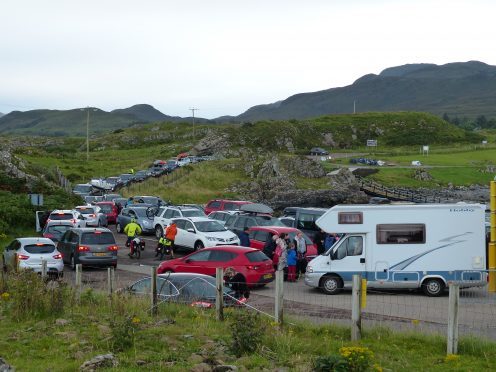A Scottish Government scheme to make island ferry fares more affordable appears to have become a victim of its own success.
The Road Equivalent Tarriff (RET) was introduced to boost remote economies – and worked so well that the number of cars on one route is up by more than 80%.
But some ferry services are now struggling to handle the additional traffic and island communities are finding that their infrastructure is groaning under the load of the additional visitors.
The largest increase has been on the Kilchoan to Tobermory crossing where cars have gone up by 80.33% from 3,635 for October 2014 to July 2015 to 6,555 for October 2015 to July of this year.
It is thought the introduction of RET – based on the cost of travelling the equivalent distance by road – could have contributed to the chaos on Saturday when passengers became stranded overnight at Kilchoan after the ferry at Lochaline broke down.
Across the rest of the network, car traffic has increased by just over 25%, while the total increase in vehicles and foot passengers for Mull has risen by around 40%.
Highlands and Islands MSP Rhoda Grant said: “RET is a good thing for islanders, communities and the economy, but you can’t increase passenger numbers without any preparation.
“We should have been working alongside islanders to prepare for the increase in passenger numbers.”
She added that a lack of campsites, bins for rubbish collection and places to empty chemical toilets had been among the issues raised after RET was introduced on the Western Isles in 2008.
Ms Grant said: “Lessons should have been learnt and something should have been put in place before it was rolled out.
“Maybe it should have been done in a way that enabled islanders to benefit from RET while the infrastructure was being installed before opening it up further.
“If tourists have a bad experience, they are not going to be rushing back.”
Mull Community Council chairman Billy McClymont said islanders welcomed the introduction of RET.
He said: “We are trying to be very positive about the situation we find ourselves in.
“The place is gridlocked, but we want to resolve it.
“We definitely don’t want to put anyone off coming to Mull.”
RET was introduced on the Western Isles, Coll and Tiree in October 2008.
It was rolled out to Islay, Colonsay and Gigha in October 2012 and to Arran in October 2014.
And, since last October, it also covers Bute, Mull, the Small Isles, the Sound of Barra, the Sound of Harris, Skye, Raasay, Cumbrae and the mainland Tarbert-Portavadie route.
A CalMac spokesman said: “This is the first summer that RET has applied across all our routes and we are monitoring the situation closely. “Carryings are up on many routes, but a more detailed analysis will be required to fully understand if and how the reduced fares are influencing travel behaviours.”
A Transport Scotland spokesman explained that RET was designed to help promote the country’s islands by reducing the cost of ferry travel, making them more attractive to visitors and helping boost local economies in remote areas.
He said: “Not only does this reduce the economic disadvantage faced by these communities, but it also enables the islands to make a bigger contribution to Scotland’s economic prosperity.”
He added that CalMac would have the opportunity to assess the impact of RET and discuss plans to manage the increased demand with local communities before any changes were made.










